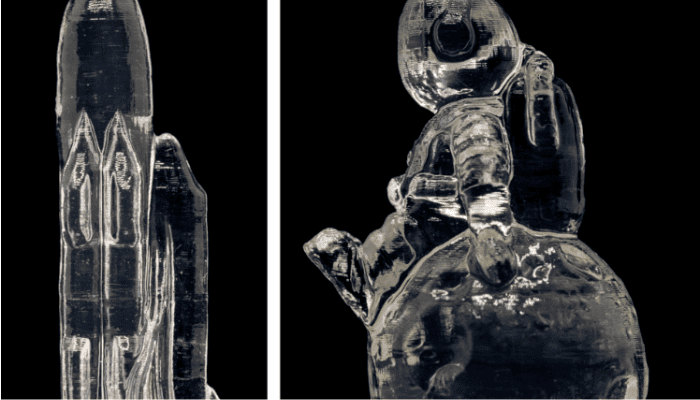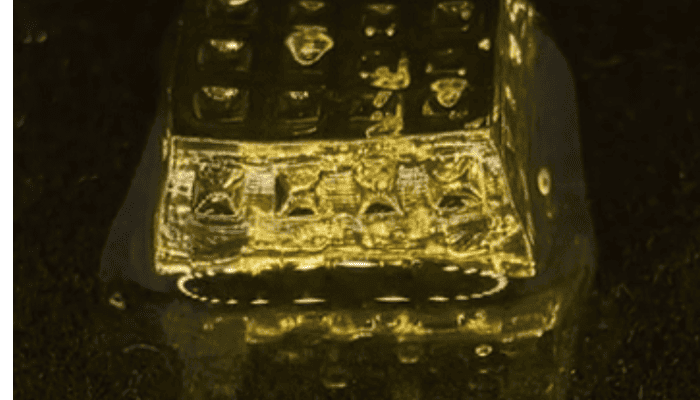Researchers 3D Print Hydrogels to Protect Astronauts from Radiation

Space is an extreme environment where dangers abound, and radiation is one of them. During space missions, astronauts and their equipment are exposed to much higher radiation than on Earth. Without appropriate protection, the equipment could malfunction. As for astronauts, prolonged exposure to this radiation could have serious health consequences. This is why protection against radiation is a major challenge for space exploration.
Faced with the challenge of space radiation, researchers at Ghent University in Belgium are studying a solution: 3D printed hydrogels. These materials, known for retaining large quantities of water, could become powerful shields against cosmic radiation. But what are hydrogels? How can they block radiation? We explain it all in this article.

A 3D printed hydrogel astronaut and space shuttle.
Protecting Astronauts from Radiation
When we think of space, we often imagine a complete vacuum, but this is not the case. In reality, space is filled with energetic particles moving at speeds close to the speed of light. These particles originate mainly from the Sun. Recent studies have revealed that water may offer effective protection against radiation, thanks to its ability to slow down radiation particles. Its density and hydrogen concentration make it particularly suitable for this purpose. However, implementing a system using water to block radiation presents a number of challenges. Adding large water tanks to spacesuits could impede astronauts’ movements. What’s more, if the water is not well distributed, the protection would be insufficient, and in the event of a leak, it could damage electronic equipment.
As a result, researchers at Ghent University in Belgium are working on a new approach to radiation protection. They are studying superabsorbent polymers (SAP), which could replace water, offering a safer and more effective solution for creating protective shields. SAP is a material capable of absorbing far more liquid than it weighs. When saturated with water, it transforms into a gel, known as a “hydrogel”. Researcher Lenny Van Daele explains: “Hydrogels are found in many things we use every day, from contact lenses to diapers and sanitary products. Our research group has experience with applications in the medical field – using hydrogels as a soft implantable material to repair damaged tissues and organs.”

Hydrogel swelling
3D Printed Hydrogels: A Breakthrough in Space Protection
Hydrogels are ideal for radiation protection in space, whether in stations or suits. The water they retain remains stable and does not spill out, guaranteeing consistent protection. In the event of a leak, the water does not immediately escape, enabling astronauts to act quickly to ensure their safety. Manon Minsard of Ghent University adds: “The superabsorbent polymer that we are using can be processed using multiple different techniques, which is a rare and advantageous quality amongst polymers. Our method of choice is 3D printing, which allows us to create a hydrogel in almost any shape we want.”
Having demonstrated that hydrogels suit the space environment, the researchers are now focusing on improving their manufacturing methods. They aim to create 3D structures from these materials and make their production more efficient, with their sights on large-scale production.
What do you think of the 3D printed hydrogels? Let us know in a comment below or on our LinkedIn, Facebook, and Twitter pages! If you are looking for more 3D printing in aerospace & defense content, check out our dedicated page HERE. Don’t forget to sign up for our free weekly Newsletter here, the latest 3D printing news straight to your inbox! You can also find all our videos on our YouTube channel.
*All Photo Credits: The European Space Agency






